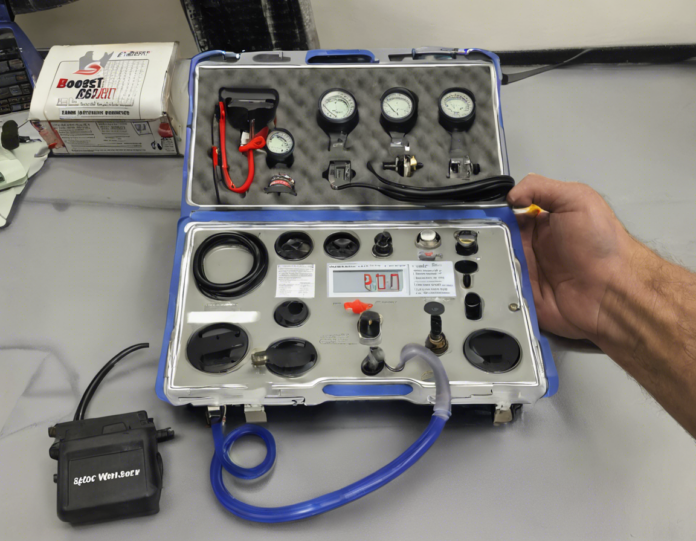Boost leaks are a well-known issue that can plague turbocharged vehicles, leading to a host of performance problems if not detected and resolved promptly. A boost leak occurs when pressurized air intended for the engine escapes before it reaches its destination, causing a loss of power, increased fuel consumption, and potential damage to the engine over time.
One effective way to pinpoint and diagnose boost leaks is through the use of a boost leak tester. This device is designed to pressurize the intake system and pinpoint leaks using compressed air or an air compressor. By conducting a boost leak test, you can identify any leaks in the system, ranging from loose fittings and cracked hoses to faulty intercoolers or damaged gaskets. This comprehensive guide will walk you through the importance of boost leak testing, how to use a boost leak tester effectively, and common FAQs related to the subject.
Why is Boost Leak Testing Important?
Detecting and fixing boost leaks is crucial to maintaining the optimal performance of a turbocharged vehicle. Boost leaks can lead to a variety of issues, including:
- Loss of power: Escaping pressurized air means less air reaches the engine, resulting in reduced power output.
- Increased fuel consumption: The engine compensates for the lost air by injecting more fuel, leading to decreased fuel efficiency.
- Potential engine damage: Over time, the engine can suffer damage due to running with incorrect air-fuel ratios caused by boost leaks.
How Does a Boost Leak Tester Work?
A boost leak tester typically consists of a pressure gauge, hose, and an adapter that connects to the inlet of the intake system. The process of using a boost leak tester involves the following steps:
- Prepare the vehicle: Ensure the engine is turned off and cool before starting the test.
- Connect the tester: Attach the boost leak tester to the intake system, usually at the inlet just before the turbocharger.
- Pressurize the system: Use compressed air or an air compressor to pressurize the intake system to the recommended pressure level.
- Monitor pressure: Check the pressure gauge and look for any drops, which indicate a leak in the system.
- Locate the leak: By listening for hissing sounds or using soapy water to identify bubbles, you can pinpoint the location of the leak.
Benefits of Using a Boost Leak Tester:
- Precision: Boost leak testers provide a precise method of identifying leaks in the intake system.
- Time-saving: Quickly locating boost leaks can save time on diagnosis and repairs.
- Cost-effective: Addressing boost leaks promptly can prevent potential engine damage and costly repairs in the future.
Common Symptoms of Boost Leaks:
- Loss of power or acceleration
- Hesitation or surging under acceleration
- Increased fuel consumption
- Whistling or hissing noises under the hood
Using a Boost Leak Tester: Step-by-Step Guide:
- Identify the intake system: Locate the inlet of the intake system near the turbocharger.
- Connect the tester: Attach the boost leak tester securely to the intake inlet using the provided adapter.
- Pressurize the system: Apply compressed air or connect an air compressor to pressurize the system gradually.
- Monitor the pressure: Check the pressure gauge for any drops in pressure, indicating a leak in the system.
- Identify and repair leaks: Use soapy water or a leak detection solution to pinpoint the exact location of the leak for repairs.
FAQs About Boost Leak Testers:
1. What is a boost leak tester, and how does it work?
A boost leak tester is a tool used to pressurize the intake system of a turbocharged vehicle to identify leaks that may lead to performance issues. It works by introducing pressurized air into the system and monitoring for pressure drops that indicate leaks.
2. When should I perform a boost leak test on my vehicle?
It is recommended to perform a boost leak test if you notice any symptoms of boost leaks, such as loss of power, increased fuel consumption, or unusual engine noises. Additionally, it is good practice to include a boost leak test as part of routine maintenance for turbocharged vehicles.
3. Can I make a boost leak tester at home?
While it is possible to DIY a boost leak tester using readily available materials, purchasing a purpose-built boost leak tester is recommended for accuracy and ease of use. DIY testers may lack the precision and effectiveness of commercially available products.
4. How much pressure should I apply during a boost leak test?
The recommended pressure level for a boost leak test varies depending on the vehicle and manufacturer specifications. Typically, pressures range from 10-30 psi, but it is essential to consult your vehicle’s manual or a professional for the correct pressure setting.
5. Are boost leak testers compatible with all vehicles?
Boost leak testers come in various sizes and adapters to cater to a wide range of vehicles. However, it is essential to ensure compatibility with your specific vehicle make and model before conducting a boost leak test to achieve accurate results.
Boost leak testing is a valuable diagnostic tool for turbocharged vehicles, aiding in the early detection and resolution of performance-sapping leaks in the intake system. By investing in a boost leak tester and following the steps outlined in this guide, you can ensure your vehicle operates at peak efficiency and performance levels.


Recent comments